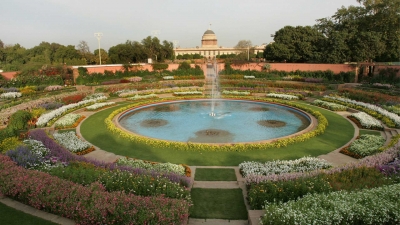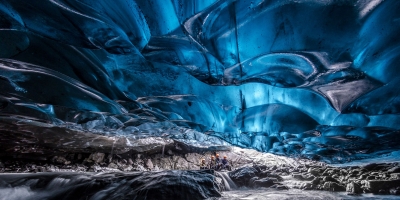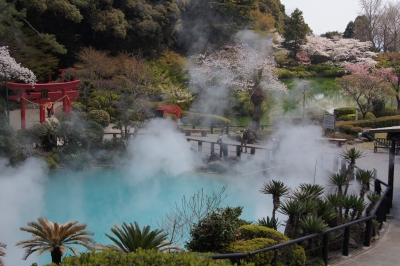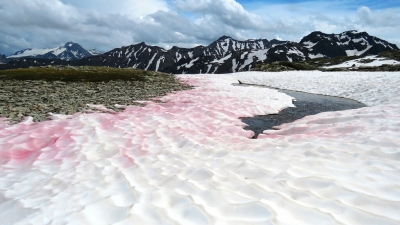What are the main features of Mughal Chahar Bagh Garden?

Two 18 feet-wide canals running north to south and two canals running east to west, criss-cross the mauin garden. Six red sandstone fountains with sculpted discs resembling lotus leaves beautify the intersections.
Stone pathways alongside the canals cut the garden into a geometric mosaic of green lawns and vivid flowers. The turf is made of soft ‘doob’ grass. Trees like bakul, cypress and China Orange trees are evenly spaced over an area of six hectares. Among the evergreen fragrant shrubs and creepers grown here are raat ki rani, mogra, juhi, gardenia and bougainvillea.
The rose garden here is one of the best in India. There are 250 celebrated varieties of roses including the Bonne Nuit, which is almost black and also a rare green specimen. Many of the roses have interesting names like First Prize, Happiness, Iceberg, Granada, Bejazzo etc.
Seasonal flowers are planted twice a year so that they bloom on the occasion of Republic Day and the Independence Day. A wonderful sight greets visitors in winter when annuals like dahlia, aster, carnation, chrysanthemum, marigold, poppy, etc. are planted in combinations of varying heights to create a spectacular pyramid of flowers.
A long shaded walkway whose walls are lined with creepers leads to the circular sunken garden around a pool. The flowers here attract many butterflies. The garden also has an enviable collection of bonsai.
Picture Credit : Google













